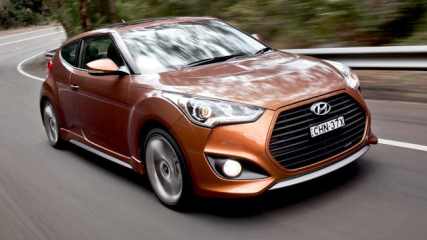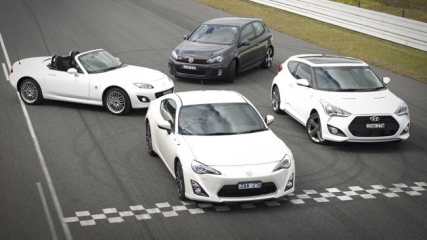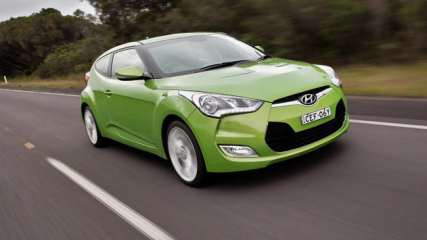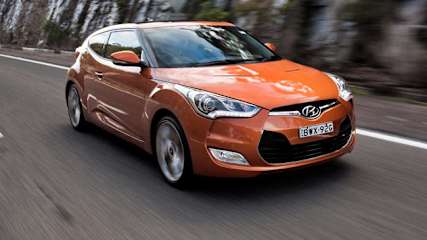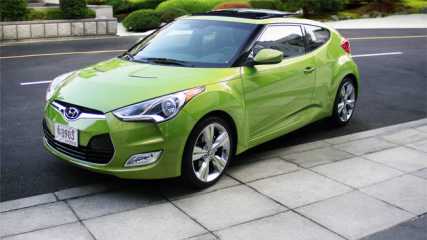Toyota 86 v Veloster Turbo v Mazda MX-5 v Golf GTI
By Paul Gover · 30 Aug 2012
Yawn. The 86 wins. There is no way to delay, or tease, or try and hide the outcome of a comparison test that provides the predictable verdict for anyone shopping for fun in 2012. When we put together a comparison crew of the newest and most-desirable affordable sporty cars in Australia today, we always knew the Toyota 86 would be tough to toss.But the Volkswagen Golf GTI is almost a classic, the Mazda MX-5 is a classic, and the latest Veloster Turbo is more proof that Hyundai is building cars that are much more than just A-to-B transport modules. So we were looking forward to a close contest, even if the Toyota 86 is the odds-on favourite for every Car of the Year award in the world for 2012.In the end, the only realistic challenger to the 86 is the Subaru BRZ. We didn't have one along because it's virtually identical - some say the Subaru is the original - to the 86er. But Toyota is making the most noise, even though the BRZ is the car I'd choose for its nicer styling, slightly softer suspension, and the full-sized spare that Toyota is about to remove from the tail of the 86.VALUEIt's crazy that the smallest and oldest of the comparo crew - the MX-5 - is also the most expensive. Not just that, but at $49,805 it also doesn't come with a lot of the hi-tech stuff - such as Bluetooth - that even bargain-basement buyers expect today. Still, it does have a thumping Bose sound system, wonderfully supportive Recaro seats and good looking BBS alloys.The MX-5 also benefits from historically high resale value as a modern in-demand classic. The Veloster SR Turbo is cheapest at $31,990 yet still has a seven-inch touch screen with satnav, panoramic sunroof, leather-leatherette seat trim, rear parking camera and Bluetooth with streaming. The turbo engine cuts service intervals to six-months/7500km, but the new capped-price service plan means the total cost over three years to service the car is $1164. It also has Hyundai's five-year warranty, but that's offset by the lowest resale value.The Toyota 86 test car is the fully-loaded GTS, with bigger brakes and wheels, satnav, auto aircon, LED running lamps and more. It also has a capped-price service plan and Toyota expects a very strong resale value. We considered the costlier Volkswagen Sirocco coupe for the comparison, but the price check went in favour of the three-door GTI pocket rocket even though it's still over $40,000. It comes with dual-zone air, Bluetooth and rain-sensing wipers, but is missing some features that are standard in the Toyota and Hyundai.TECHNOLOGYAll four cars have four-cylinder engines, although they range from the Subaru boxer in the 86 to the turbos in the VW and Hyundai. Power is important for enjoyable driving and the twin turbos are naturally on top, with the GTI taking the prize with 5 kiloWatts more than the Veloster, although the Korean is lightest on fuel at 6.8litres/100km. While the 86er's engine is notoriously thirsty with 7.8L/100km, and takes premium unleaded, the MX-5 actually tails on efficiency at 8.1litres. The Volkswagen has a double-clutch automatic and the rest are driver-first six-speed manuals, while each has all-wheel disc brakes and sports suspension settings.DESIGNThe 86 has classic sports car proportions, just like the droptop MX-5 that's become a classic. But the Toyota has a modern cabin and reasonable space inside, where the Mazda is cramped and old-fashioned. There's nothing old-school about the Veloster, from its gaping mouth to a body with two hatchback doors on one side and a single coupe door on the other.There's nothing special about the GTI, but it has the right 'hot hatch' triggers despite a cabin that's now showing its age with the all-new Golf just a month away from a Carsguide preview drive in Europe.SAFETYThe age of the MX-5 is reflected in a four-star ANCAP safety rating, against the maximum five stars for its rivals. The Veloster comes with six airbags while the Toyota and GTI add a knee airbag, but the Hyundai is the only one with a standard review-view camera in a field where rear vision is often crimped in favour of fashion.The 86er still has a spare but it goes from September, when a puncture-repair kit clears some extra boot space, while the MX-5 also has a repair kit for space reasons and the Veloster and GTI have temporary spares.DRIVINGDriven on their own, each one of these cars is fun. Well, until you try and cram the weekly groceries into the MX-5 or 86. The droptop Mazda is sharp and responsive, even if the engine is a bit dowdy by today's standards, but the biggest failing is the lack of cabin space. It's a small car that really feels small, especially with the folding roof in place.It really shows its age when we head for pictures at Lakeside raceway outside Brisbane, as the MX-5 - despite brilliant steering and a taut chassis - is actually pretty slow. The Veloster is the most practical in the pack, from its extra-door access to a drivetrain that's quick enough but not overly demanding. It gets along briskly, is quiet on a cruise, and has lots of nice stuff in the cabin. The big glass window in the tail cuts vision and makes the back seat too hot for youngsters, but it's still the sort of car that most fashion-conscious buyers will enjoy. The Korean car is good enough, but the Volkswagen is truly good with a brilliant engine, a responsive DSG gearbox - despite Carsguide complaints about reliability and longevity - and a taut chassis that feels right in all conditions. It's also easy to park, easy to handle, and is only let down by a cabin that's feeling - like the Tiguan driven recently - old and dowdy.It's hard to fault the 86er, which is a landmark sports car from a company that's doing all it can to put personality into its cars. Every drive is fun in the 86, even if it's just a mundane run to the shops, thanks to a car that you wear as much as drive.Ok, the engine is a bit flat and the boot is not huge and I think the dash looks below-par for Toyota quality, but all the ordinary stuff drops away when you hit a twisty road and uncork the car's performance.VERDICTIn this field, and despite so many previous successes, the MX-5 is last. It might be the world's all-time favourite sports car, a sweet drive and a taut package, but it's an old car that costs too much. Even its party trick - that fold-down roof - is not enough to lift it off the bottom.The Veloster is third, despite its practicality and the 'look at me' bodywork. It's competent and great value, nicely youthful inside and well equipped, but not a winner. The Hyundai drives nicely enough, but when you jump into the Golf you realise the Korean maker still has some way to go. It just feels cheaper and less together. The GTI is a Veloster done right, from the driver's seat, with a truly taut chassis, great performance and German quality on the assembly front. The difference between the Hyundai and Volkswagen is rammed home at Lakeside, where the GTI is actually quickest of the crew - thanks to more punch than the 86er - and the Veloster always seems to be nice but not right. So we come to the 86, which wins because it's a sports car for the 21st century.It looks great, is practical and reasonably efficient, and is so much fun to drive. It could do with more punch, and some of the cabin stuff looks and feels cheap, but it's a landmark car at a great price. The only question that remains is how the 86 would have done against a BRZ.For me, and I've driven and lived with both, the Subaru would take a narrow points decision. But, as it stands, the 86 is a knockout winner.
